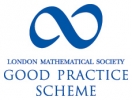Superoscillatory Imaging
Superoscillation is the phenomenon where a bandlimited function oscillates faster than its fastest Fourier component. An example of its application is in taking images using optical instruments: it was previously thought that the resolution we can achieve in such images was fundamentally limited, but with superoscillations there is, in principle, no limit to the achievable resolution. This opens up the possibility of taking much more detailed images of the microscopic world, for example of details within human cells.
There is, however, an inherent trade-off in superoscillatory functions. The faster the oscillation, the lower its amplitude, or the less of a system's energy can be directed into that oscillation. Optimisation of this trade-off is therefore crucial to enable superoscillations to be utilised in practice, both within optical imaging and many further wide and groundbreaking applications.
This interdisciplinary work is being done in the Applied Maths group with collaborators in Physics. The group is led by Katrine Rogers and also includes research student Catherine Armes.

